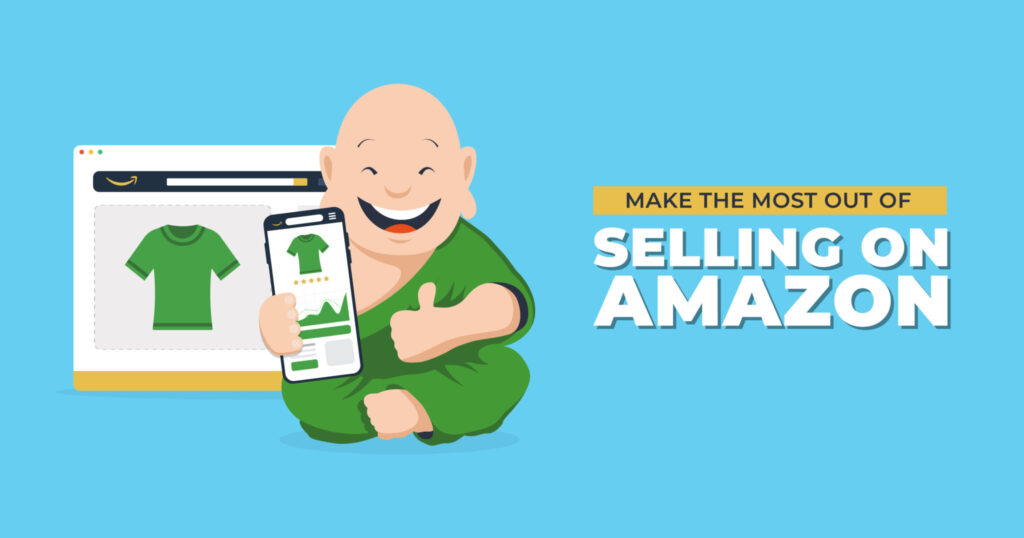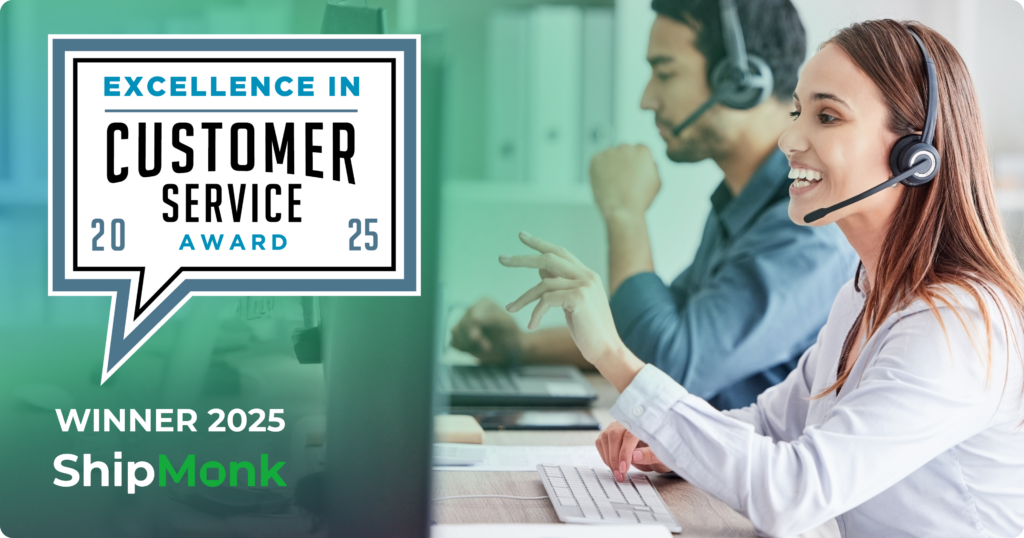With sales of over $524.9 B per year, the Amazon marketplace gives ecommerce sellers access to hundreds of millions of potential customers worldwide, and over 200 million Prime members. As an ecommerce business owner, you’d be silly not to at least consider it. Still, there are tradeoffs: you have to follow their rules, you give up some (or all) control over your brand, and a significant portion of your profit margin goes to Amazon. That’s why, as a fulfillment company that specializes in omnichannel fulfillment, we don’t think you should have to choose. You CAN have your own channels and Amazon too!
To make an educated decision, you’ll need to run the numbers, know what you’re getting into, and explore all your options. Whether you’re a tiny startup hoping to make a name for yourself, or a successful self-made ecommerce brand, launching an Amazon store is like nothing you’ve ever done before. Amazon offers lots of instructions for new sellers, but we’re going to cover the basic steps below. Where do you start? Right here!
1. Write a Business Plan
If you haven’t already, we recommend you start by creating a business plan that will help you evaluate the pros and cons of this sales channel, and how you will measure its success.
Your business plan should include:
- Company overview
- Description of your products and services
- Market analysis
- Strategy and implementation
- Financial plan and projections
As you review your business plan, think of how it will apply to Amazon specifically. For example, are you selling on Amazon to primarily attract new customers, or are you using it as an extension of an already established online business? Will you offer all of your products or just a select few? What is your product or brand’s ecommerce niche? Who are your competitors in this niche, and how do their brands and products differ from yours? What can you do to make your products stand out?
2. Understand the Fees
In order to evaluate this step you’ll need to understand the impact it will have on your bottom line. Amazon can get your product in front of millions of customers, but it is difficult to stand out and comes at a cost. These are the main fees Amazon charges, but for a complete list, visit this resource: How Much Does it Cost to Sell on Amazon?
- Subscription Fee (or Selling Plan Fee): monthly or per-item fees, depending on the selling plan you choose (see next step).
- Referral Fee: a percentage Amazon takes from each item sold. The referral fee is applied to the total sale (which includes sales price, shipping cost, and optional add-ons like gift wrapping). The percent applied varies by product category. There is a minimum referral fee applied to some product categories, like jewelry and watches. You will pay the greater of the two fees, whether that’s the minimum referral fee or your product category’s referral fee.
- Closing fee: a flat fee applied only to media products, such as books, video games, music, and DVDs. Currently that fee is $1.80 per item.
- Other fees: If Amazon is handling your fulfillment (see #3 below) you will pay fees for inventory storage and fulfillment, in addition to plan and referral fees. If you’re self-fulfilling or using a third-party logistics (3PL) provider, the fees will go to the 3PL. You may also be eligible for optional services for additional fees, such as advertising and premium account services.
3. Choose a Selling Plan
Option 1: Personal Plan
If you’re a small business, or just testing the Amazon waters, the Personal Plan is your best option. You’ll pay $0.99 per item sold, plus referral fees and variable closing fees (if applicable), and potential other costs. You don’t pay any plan fees unless an item sells. (For a full explanation of costs and an estimate, try Amazon’s pricing calculator.)
| Selling Fees | Amount |
| Personal Plan fee | $0.99 per item sold |
| Referral fee | ~8% to 15% of total cost per item, depending on category |
| Closing fee (media items only) | Additional flat fee of $1.80 per item |
| Other fees | Depending on the fulfillment program (see below), may include inventory, fulfillment, and shipping fees, as well as inventory-related surcharges, late fees, or removal fees. |
Option 2: Professional Plan
For larger volume businesses and those who are ready to make a commitment, the professional plan offers several perks. You’ll pay $39.99 per month no matter how many items are sold, but will have greater control of your account. You will be able to set your own shipping rates, manage orders and inventory, and enjoy many listing perks.
| Selling Fees | Amount |
| Professional Plan fee | $39.99 per month |
| Referral fee | ~8% to 15% of total cost per item (depending on category) |
| Closing fee (media items only) | Additional flat fee of $1.80 per item |
| Other fees | Depending on the fulfillment program (see below), may include inventory, fulfillment, and shipping fees, as well as inventory-related surcharges, late fees, or removal fees. There are also fees for optional services, including advertising and premium account services. |
4. Choose a Fulfillment Program
There are three fulfillment options for Amazon sellers:
Fulfillment by Amazon (FBA)
Amazon takes control of all aspects of inventory storage, order processing, fulfillment and returns. They purchase the inventory from you, you prep and ship it, they store it in their warehouses, and handle all post-purchase customer interactions. In addition to the plan and referral fees listed above, you pay:
| Additional Fees | |
| FBA Prep Services | What it costs to prep, pack, label, palletize, and ship products in bulk to comply with Amazon’s strict receiving standards. Your 3PL may offer FBA prep services. |
| Inventory storage fees | Cost to store products in Amazon warehouse, depending on dimensions, weight and quantity of products |
| Non-compliance fees | Penalty imposed for non-compliance |
| Storage removal or return fees | Cost to return shipment for non-compliance or for removal |
| Aged inventory fees | For inventory in storage longer than 6 months |
| Fulfillment fee | Cost per order, includes shipping. Rate varies by size and weight of order. |
| Labeling fee | Cost for re-labeling when items are incorrectly labeled |
| Returns processing | Cost per returned item |
Merchant Fulfilled Network (MFN), formerly Fulfilled by Merchant (FBM)
Products are listed in Amazon stores, but the ecommerce seller stores inventory in their own fulfillment centers or with a 3PL, and manages all post-purchase services independently, including fulfillment, shipping, returns, and customer support. Amazon collects its plan and referral fees as listed above, but inventory storage, fulfillment and shipping costs are borne by the seller or paid to a 3PL. ShipMonk excels at helping ecommerce businesses add Amazon MFN/FBM to their multichannel sales strategy, which allows them to retain control over their own inventory.
| Additional Fees | |
| Inventory storage fees | Cost to store products in warehouse, depending on dimensions, weight and quantity of products |
| Fulfillment fee | Flat cost per order |
| Returns processing | Cost per returned item |
| Special Services | Costs for re-labeling or re-packaging items, kitting and assembly, custom packaging |
Seller Fulfilled Prime (SFP)
Seller Fulfilled Prime is a plan that allows Amazon sellers to deliver directly to domestic Prime customers from their own warehouse or 3PL. To qualify for SFP, an ecommerce seller must be able to fulfill orders with one-day and two-day shipping at no additional charge for Prime members. It is very difficult for a single ecommerce brand to qualify for this plan, but a large 3PL like ShipMonk, with a network of eight nationwide self-owned fulfillment centers, can help you qualify.
4. Register your account
Once you’ve settled on a plan and fulfillment method, you need to create a seller account on Amazon.
5. Product Pages
Setting up your product listings and product detail pages is the next step, and arguably the most important. There are over 3 million sellers on Amazon in North America alone. If you want to stand out, a clear, visually appealing product page can make you easier to find and set you apart from the riff raff. Per usual, it’s all in the details.
Amazon has very strict product detail page rules and product image requirements. But before you get started, make sure your product isn’t a restricted product. Also, be aware that product listings in certain categories (like jewelry and watches) require Amazon approval before your listing can go live.
To create your first product listing, you will need to know the product’s GTIN (Global Trade Item Number) such as its registered UPC, ISBN or EAN. This identifies the product as a unique item, or as an exact match to an item already for sale on Amazon. If your product is new to Amazon, you may need to purchase a UPC code, or request an exemption. You will then be asked to supply the following:
- SKU (stock keeping unit) — This is the number your ecommerce business uses internally to identify and track each unique product and each variation you sell.
- Product Title — No more than 200 characters, including brand name, product/style name, product category or subcategory, and any other unique, identifying information. Capitalize the first letter of every word.
- Product Description — One or more paragraphs of text describing the product, its uses, key features and benefits. Including keywords in the description improves the chances of people finding your product.
- Bullet Points — Condensed versions of the key features, benefits, and specifications for those shoppers who like to skim.
- Product Images — Google recommends 500 x 500 pixels or 1,000 x 1,000 pixels to increase listing quality, with a white background. The product should fill 80% of the space in the photo. Include photos of the product from all angles, as well as in use, on a model, or in another setting to give it some scale. The Amazon Seller App has a Product Photo Studio feature for Apple or Android smartphones, which makes adhering to Amazon’s image requirements simple. And, if you have the smartphone but not the setup, Amazon Basics sells its very own Portable Photo Studio, specifically tailored for mobile photography.
- Variations — List different colors, sizes or scents.
- Search terms and relevant keywords — Think about what you would type into a Google search bar to find your product. Use tools like Google Ads Keyword Planner and Semrush to explore related keywords and questions people have when they’re searching for your product. Include these words in your product title, product description, or bullet points, wherever they naturally fit.
If you are an e-tailer or reseller (that is, an ecommerce seller that sells a curated collection of brands rather than your own manufactured brand) it is likely that there will be other sellers on Amazon selling the same brands and products. Amazon combines the data from all the product pages for that item, and presents them as one product. The “featured offer” with the “Buy Now” button might be the one with Prime shipping, or it may be the lowest price. Other offers (the same product sold by different sellers with different prices or shipping options) are listed under New & Used, or Other Sellers on Amazon. Your goal is to become the “buy now” featured product.
It goes without saying that you should avoid misspelled words and poor grammar. You’ll want to put your best foot forward in front of millions of potential customers. If you find that the product page contains incorrect information or is missing information, you can request a page review or propose additions to the detail page. Successful sellers on Amazon play by the rules to maximize profit and visibility with the biggest ecommerce company in the world.
6. Make the Most Out of Selling on Amazon
Love it or hate it, Amazon is here to stay. If you’re an e-tailer or a native ecommerce brand owner, you can’t beat Amazon at their own game. You can, however, use Amazon as part of a multi- or omnichannel sales strategy to expand your geographic reach and expose a wider audience to your product. If you’ve decided that Amazon is where you want to be, you might as well make the most of it. Here are a few tips to follow:
- Use multiple sales channels — Don’t put all your eggs in the one basket. Amazon requires a significant commitment to doing things their way, which may restrict your options with other channels. In addition, a ChannelAdvisor survey showed that potential customers “discover” products in plenty of other places: 37% on brand and retailer websites, 31% on social media channels, 25% through Google ads and social media ads.
- Know your costs — Use Amazon’s pricing calculator to estimate your costs. Then compare it to your current storage, fulfillment and shipping costs. Consider that you will need to continue to spend on marketing and advertising, regardless of whether or not you decide to sell on Amazon. You may be able to save on fulfillment and shipping costs by moving to a 3PL. Because they handle thousands of orders per day, they qualify for shipping discounts you could never receive on your own.
- Choose the right products — You don’t have to list all your products on Amazon. Choose your best sellers, or products that stand out from the other players in the category. Inventory that sits on Amazon’s shelves for more than six months will incur aged inventory fees. Secondly, choose products that can be sold at a high enough profit margin that you’ll make an acceptable profit after all the fees. Lastly, choose products that are best suited for Amazon’s fulfillment practices. If your items are large, heavy, and/or difficult to ship, you’ll find yourself incurring extra fulfillment fees.
- Kit before you ship — Avoid extra costs for bundling or kitting products, or any other special services. Essentially, all your inventory must be labeled and prepped before reaching their warehouse. Failure to meet Amazon’s receiving requirements can lead to extra fees to the tune of $1.99 per item. Or your shipment may be refused and you pay return freight costs.
Automate whatever you can — If you’re selling through multiple channels, having an advanced software system that syncs and tracks all your orders in one place is critical. If you’re considering Amazon’s Fulfilled by Merchant program as part of a multichannel strategy, you should also consider partnering with a tech-first 3PL that is committed to automation, robotics, and helping ecommerce businesses scale. To qualify for Seller Fulfilled Prime, you’ll need to meet even stricter requirements for fulfillment and shipping speeds. And if you’re considering Amazon FBA, you’ll need to integrate your shopping platform and back-end systems with Amazon so you can keep track of inventory and quickly prep and fulfill FBA orders headed to Amazon warehouses.
Need Help?
If all of this sounds like too much, you might want to consult with your 3PL. ShipMonk is happy to help our ecommerce clients get started on Amazon with prepping services and software integration. We can even help you compare costs to see which FBA, FBM, or SFP options might best benefit your business. The best part is that ShipMonk is batting for your team. As your partner, we have a vested interest in making sure everything runs as smoothly as possible.
Still on the fence? Got more questions? Contact a fulfillment expert at ShipMonk today.





